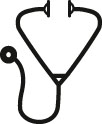Abstract

A nine-year boy with adrenoleukodystrophy (ALD) due to an ABCD1 whole gene deletion was diagnosed with the active cerebral form of disease characterized by demyelination and gadolinium enhancement on brain MRI. Allogeneic hematopoietic stem cell transplant (HCT) or lentiviral correction of autologous CD34+cell-based gene therapy (GT) are the only known mechanisms to arrest the progression of cerebral disease. He was treated with GCSF/plerixafor to mobilize autologous CD34+ cells which were then transduced with the ABCD1 expressing lentiviral vector. He received myeloablative conditioning with busulfan and fludarabine followed by lentivirus-based GT. Initial viral copy number (VCN) was 0.8592 in whole blood at 30 days post HCT and MRI's showed disease stabilization with significant decrease in gadolinium enhancement at 60 and 100 days after GT. Unfortunately, VCN then declined and subsequent MRI's showed re-emergence of gadolinium enhancement and disease progression at 6 months after GT.
Antibodies to the ABCD1 gene product (ALDP) were detected in the patient's plasma by immunoblot at 9 months after GT. Antisera also showed specific reactivity to human peroxisomes in immunofluorescence assays, suggesting that generation of an immune response had occurred following GT. Evaluation of pre-GT plasma did not find any anti-ALDP. Evaluation of post HCT plasma from other patients undergoing either GT or allo-HCT did not show anti-ALPD reactivity suggesting this was a unique phenomenon to this patient. Peptide mapping indicated the antisera bound mostly to the C-terminal portion of ALDP in five distinct peptide regions. Subtyping of the antibody indicated it was IgG and not IgM at 9 months post GT. Specific anti-ALDP IgG Subtypes detected were IgG1 and IgG3. Immune adjuvant therapy using rituximab and daratumumab failed to significantly reduce plasma reactivity to ALDP.
Due to disease advancement on MRI, an allogeneic HCT was performed approximately 12 months after initial GT with an 5/6 HLA matched umbilical cord blood unit. Donor neutrophil engraft occurred on day +17, donor platelet engraftment occurred on day +35. Chimerism studies revealed 100% engraftment in CD33+cells and 90% engraftment in CD3+ cells by 60 days post HCT. The MRI's at 30-, 60-, and 100-days post allo-HCT showed stabilizing cerebral disease and fading gadolinium enhancement. Importantly, plasma collected at 30-, 60-days, and 100-days post allo-HCT showed no reactivity to ALPD.
Conclusion. This is the first case of anti-ALDP antibodies occurring after gene therapy for cerebral ALD. Antibody generation may have been related to the unique ABCD1 whole gene deletion condition within this child which is very rare as the majority of ALD patients have missense or non-sense mutations in ABCD1. Whether anti-ALDP presence was a causal or an unrelated phenomenon to the loss of the autologous vector-containing cells is not currently known at the time of submission. These findings highlight to need to scrutinize patients prior to before and after GT for the presence of antibody to the protein product being introduced. This may be especially important in the case where the patient's immune system has never seen the protein (like in this case of a whole gene deletion) and therefore would have never been "educated".
Disclosures
Gupta:Vertex Pharmaceuticals: Consultancy; Blue Rock Therapeutics: Membership on an entity's Board of Directors or advisory committees.
Author notes
 This icon denotes a clinically relevant abstract
This icon denotes a clinically relevant abstract
Asterisk with author names denotes non-ASH members.

This feature is available to Subscribers Only
Sign In or Create an Account Close Modal